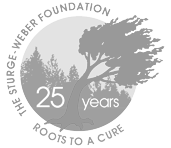Assignment
The discovery of a gene mutation that causes Sturge-Weber syndrome, a rare disease characterized by a facial birthmark and neurological abnormalities, was published in the New England Journal of Medicine.
- This represented a significant medical breakthrough for the disease and its patient community
- Multiple research and academic facilities were vying for recognition
- The Sturge-Weber Foundation wanted to increase awareness of its role in the discovery

